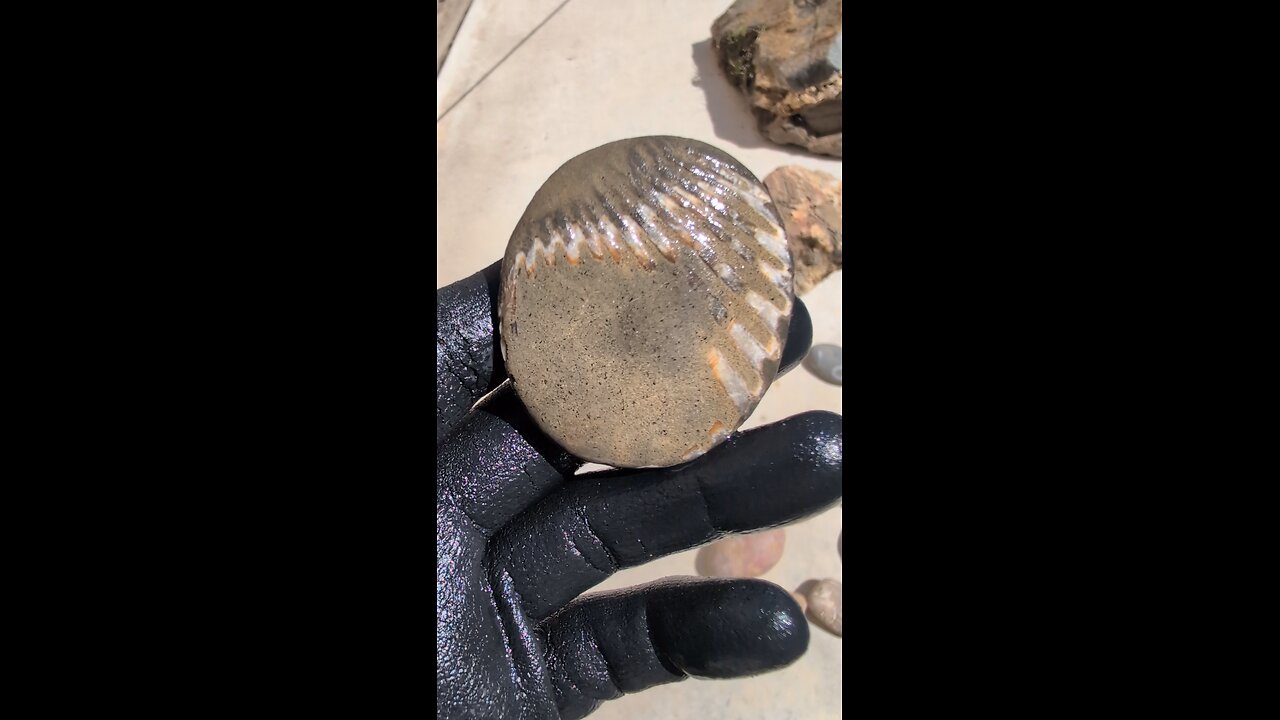Premium Only Content

Rugose Coral Fossil!
The fossil in the image appears to be a cross-section of a rugose coral, also known as a horn coral. Rugose corals are an extinct group of solitary or colonial corals that lived from the Ordovician to the Permian periods (about 485 to 252 million years ago). The distinctive features in this fossil include the radiating, rib-like structures (septa) that extend from the center outward, which are typical of rugose corals. These septa are the internal partitions that supported the coral polyp, and their arrangement in a radial pattern is a key identifier.
The circular shape and the concentric growth lines around the edge suggest this is a transverse section, likely cut or naturally broken to show the internal structure. The white and brownish coloration is due to mineral replacement over millions of years, often with calcite or silica, which is common in coral fossils. The texture and structure are different from the tabulate corals you showed earlier, as rugose corals tend to have more pronounced septa and a less honeycomb-like appearance.
This particular specimen might belong to a genus like Heliophyllum or Zaphrentis, which are common rugose corals with well-defined septa.
-
 16:37
16:37
Professor Nez
1 hour ago🚨Internet MELTS DOWN over JD Vance & Trump BREAKING the Democrats!
4.45K41 -
 LIVE
LIVE
Major League Fishing
4 days agoLIVE! - Fishing Clash Team Series: Heritage Cup - Day 1
3,679 watching -
 18:40
18:40
itsSeanDaniel
3 hours agoPiers Morgan CALLED OUT and HUMILIATED by Andrew Tate
14.3K141 -
 LIVE
LIVE
Times Now World
2 days agoLIVE: "ON CAM: How the Charlie Kirk Shooter ESCAPED – Shocking New Footage Revealed!"
413 watching -
 1:45:51
1:45:51
Game On!
22 hours ago $10.16 earnedWise Guys Reveal NFL Week 2 BEST BETS Now
56.4K7 -
 26:57
26:57
Robbi On The Record
2 days agoMouth Breathing Is Why You’re Exhausted | with Dr. Melanie Silvestrini
20.3K5 -
 LIVE
LIVE
Total Horse Channel
5 hours ago2025 Reno Snaffle Bit Futurity | Sunday Finals
149 watching -
 40:44
40:44
SouthernbelleReacts
7 days ago $2.84 earned“Event Horizon (1997) Reaction | Hellraiser in Space with Sam Neill & Laurence Fishburne”
29.6K4 -
 10:49
10:49
Artur Stone Garage
3 days ago $2.02 earnedI Spent $2000 on My Turbo Honda Civic Build (Before & After)
29.8K8 -
 0:44
0:44
Danny Rayes
18 hours ago $3.25 earnedDid Someone Know It Was Going To Happen?
31.5K7